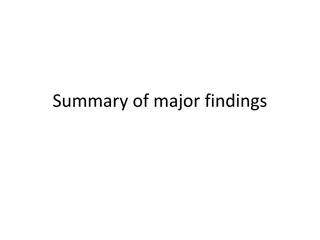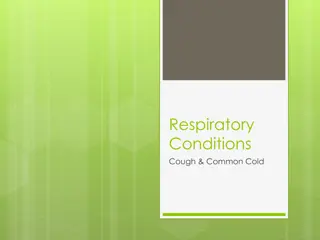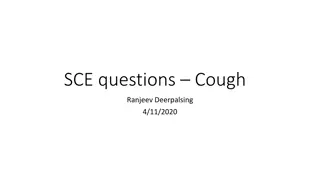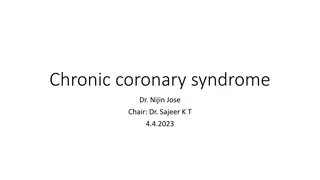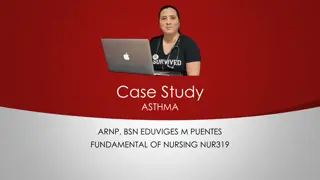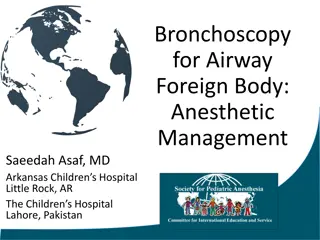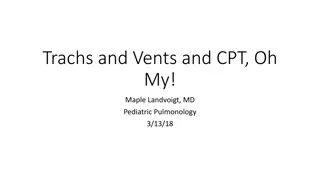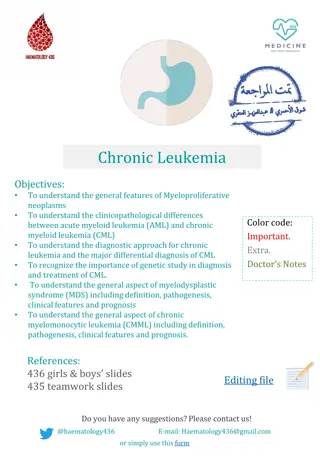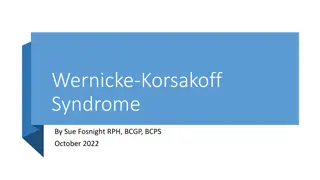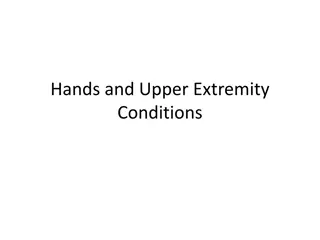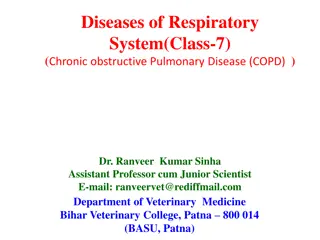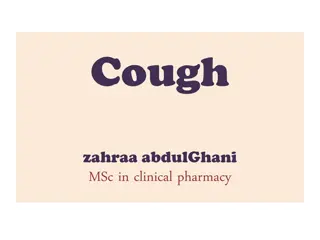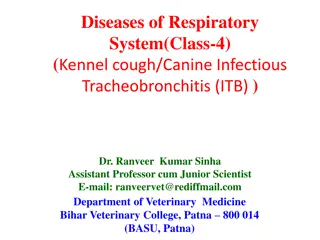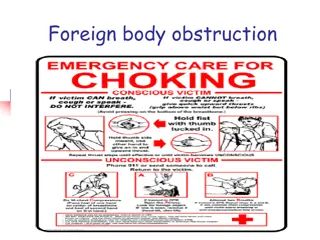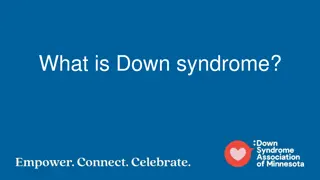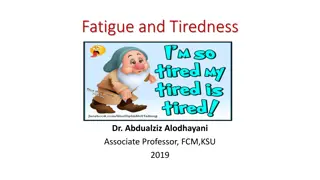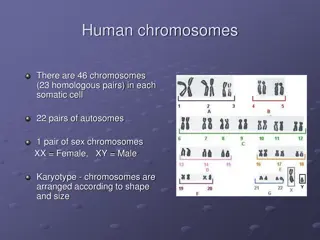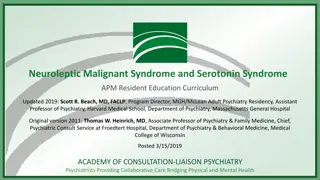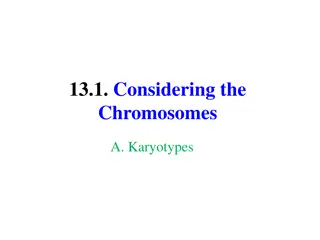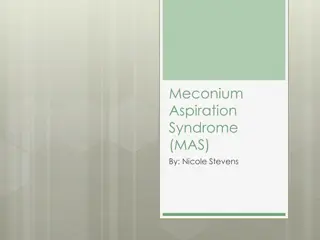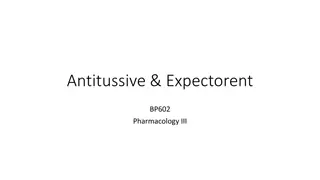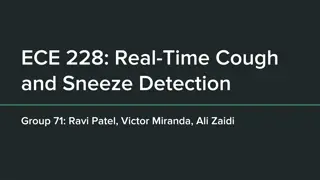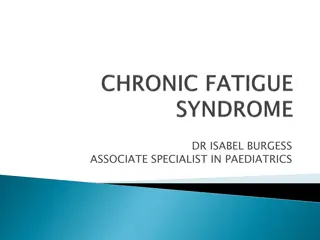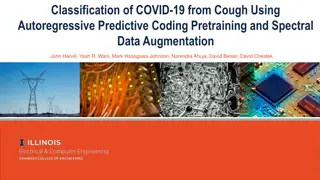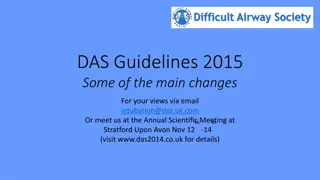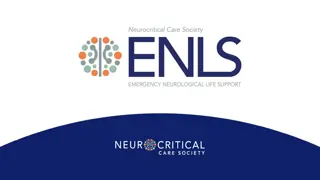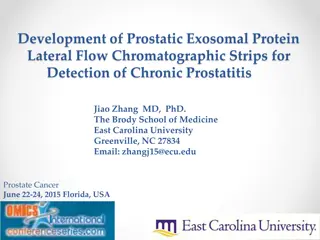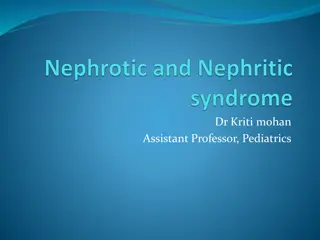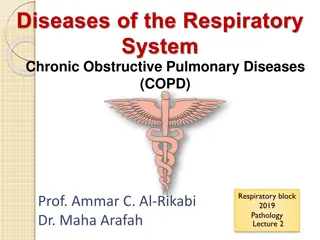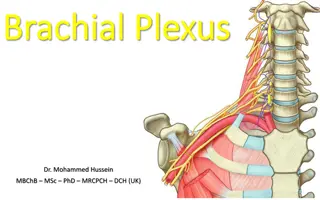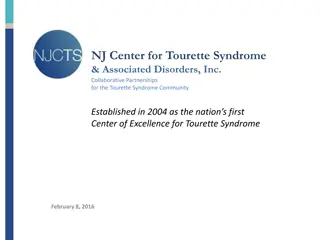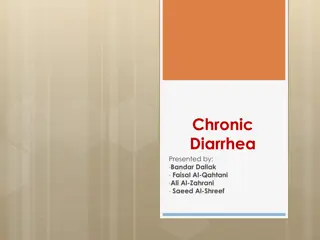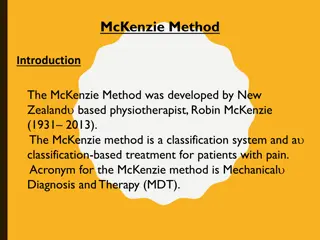Understanding Upper Airway Cough Syndrome and Chronic Cough Causes
Upper Airway Cough Syndrome (UACS) encompasses conditions like rhinitis and sinusitis, leading to chronic cough lasting more than 8 weeks. Common causes include asthma, GERD, and airway diseases. Differences in terminology between countries exist, with UACS being more widely accepted in the US. The European Respiratory Society views postnasal drip as a symptom rather than a disease and does not fully attribute it to chronic cough.
Download Presentation

Please find below an Image/Link to download the presentation.
The content on the website is provided AS IS for your information and personal use only. It may not be sold, licensed, or shared on other websites without obtaining consent from the author. Download presentation by click this link. If you encounter any issues during the download, it is possible that the publisher has removed the file from their server.
E N D
Presentation Transcript
UPPER AIRWAY COUGH SYNDROME Berna USLU CO KUN SBU S SL HAM D YE ETFAL E. A. HOSPITAL ENT DEPARTMENT ISTANBUL/TURKEY
Upper airway cough syndrome was coined to encompass diseases affecting upper airways, like rhinitis and sinusitis, which results in chronic cough
Types of cough Acute: Less than 3 weeks Subacute: 3-8 weeks Chronic: More than 8 weeks
Common causes of chronic cough Asthma Gastro Esophageal Reflux Disease Upper Airway Cough Syndrome
Causes of chronic cough Postinfectious Medications (ACE inhib) Airway diseases and parenchymal diseases
UACS vs PNDS Postnasal drip syndrome UACS
UACS vs PNDS USA American chest physicians adopted PNDS as the most common cause of chronic cough In 2006 ; in patients with chronic cough related to upper airway abnormalities the committee considers the term UACS to be more accurate and used instead PNDS UK British used the term rhinosinusitis instead of PNDS A relationship between PNDS and chronic cough was not accepted by UK chest physicians They prefer to use rhinosinusitis instead of PNDS
ERS The European Respiratory Society characterizes postnasal drip as a symptom rather than a disease The most patients with postnasal drip do not cough Based on that postnasal drip cannot fully explain the cause of a cough, and does not accept the diagnosis PNDS/UACS
ERS PNDS/UACS is described as rhinitis/rhinosinusitis or upper airway diseases caused cough Such diseases account for 6-21% of chronic cough cases
Pathogenesis It is still unclear but there are some theories described
Pathogenesis Postnasal drip theory Airway inflammation Sensory neural hypersensitivity theory
Postnasal drip syndrome PNDS is the drainage of secretions from the nose or paranasal sinuses into the pharynx Clinically, the diagnosis of PNDS largely rests on the reporting of the patient of this sensation of having something drip down into the throat, nasal discharge, or throat clearing The presence on examination of the nasopharynx and oropharynx of mucoid or mucopurulent secretions or cobble stone mucosa also is suggestive
Postnasal drip theory Bardin et al placed radionuclide in the maxillary sinus of sinusitis patients and 24 hours later detected its presence in maxillary sinus, nasopharynx, esophagus and lower GIT; however, its presence was not detected in the pulmonary aspirate This study showed that after 24 hours secretions of the nasal and sinuses had barely entered the lower airways
Postnasal drip theory O Hara and Jones followed up 108 consecutive rhinitis/rhinosinusitis patients who displayed symptoms of postnasal drip and found that only 21% complained of cough Among the patients with a cough only 8% had postnasal drip and a cough These data indicate that cough is uncommon in patients with postnasal drip and may not be associated with postnasal drip
Airway inflammation theory Upper airway Lower airway
Lower airway inflammation It is commonly associated with chronic cough Histamin, prostaglandin can increase the sensibility of cough via stimulating local nerve endings in the lower airways
Lower airway inflammation Niimi reported that patients with UACS showed a remodelling of the airways, characterized increased sub-basement membrane thickness, vascularity, vessel size and signs of goblet hyperplasia The submucosal infiltration of mast cells in patients with nonasthmatic cough differed from the infiltration of eosinophils and neutrophils found in patients with asthmatic chronic cough
Airway inflammation which might be associated with activation of mast cells, could be a cause of increased cough sensitivity, leading to cough
Upper airway inflammation Some ORL have proposed that UACS is not only associated with nasal diseases, but might also influenced by a chronic inflammation in the pharynx and larynx, such as inflammations resulting from allergic pharyngitis and chronic tonsillitis Such inflammations may result long term contact with nasal and sinus secretions
Upper airway inflammation Chronic tonsil hypertrophy in child and adult may be associated with cough, that could be relieved after tonsillectomy
Sensory neural hypersensitivity theory Activated nasal nerves and increased cough sensitivity ncreased neural sensitivity in the pharynx or larynx Cough hypersensitivity syndrome Sensory neural hypersensitivity theory
Activated nasal nerves and increased cough sensitivity Pecova reported increased cough sensitivity in AR patients Histamin is an important mediator and directly stimulated sensory neurons Capsaicin activates local nerves via combining with TRPV1 in nerve endings Histamin and capsaicin don t produce cough they just increase cough sensitivity
The mechanism of nasal neural activation elicited increased cough sensitivity is not clear After accepting external stimulus the nasal mucosa produces a variety of inflammatory factors such as histamin This increases cough sensitivity
Increased neural sensitivity in the pharynx or larynx Bucca, proposed the concept of larynx hyper- resposiveness (LHR) This is a protective reflex-laryngeal chemical reflex can prevent a liquid substance from entering the lower airways LHR was found in 76% in UACS patients These patients seemed to have increased sensitivity in the pharynx and larynx, which made it easier to generate cough after providing a stimulus
Cough hypersensitivity syndrome Patients with CHS usually present with one of three different phenotypes 1- Patients with rhinal symptoms 2- Patients with Th-2 cell dominant phenotype 3- Patients with reflux
It has been demonstrated that the pathological change associated with both sensory hyper-reactivity and cough hypersensitivity is the upregulation of TRPV1 expression in sensory nerves TRPV1 antagonists are effective for improving the symptoms
Mechanisms influencing cough reflex in subjects with upper airway disease Complete nasal obstruction and lack of nasal functions in oral breathing nhalation of cold dry and unfiltered air Damage of the superficial mucosal layers with increased penetration of tussigenic factors to the nerves Neurogenic and immune factors iniated inflammation Overproduction of mucus and post nasal drip Activation of mechanosensitive fibers in pharynx and larynx Activation of chemosensitive C fibers by mediators ncomplete nasal obstruction and nasal breathing with increased resistance Formation of secretions and inflammatory mediators, cells and their products-microaspiration to the lower airways Activation of chemosensitive C fibers Nasobronchial reflex Modulation of activity of airway afferents by increased tone of the smooth muscle cells rritation of nasal trigeminal afferents by inflammation Effects trigeminal-vagal drive and up-regulation of cough pattern generator activity Virus induced changes Increased expression of TRPV1
How to diagnose PNDS 1. There is no objective test for it 2. No way to quantify the amount 3. No way to directly prove that it is causing cough
Clinical features No pathogonomic finding Chronic cough with or without expectoration Throat cleaning Nasal discharge Sensation of secretions dripping down the throat
What we see? Presence of secretions in posterior pharyngeal wall Cobble stone appearance of pharyngeal wall mucosa
Conditions associated with UACS Rhinitis Sinusitis Bacterial sinusitis AR-NonAR Vasomotor rhinitis-Postinfec rhinitis Allergic fungal sinusitis R. medicamentosa, R of pregnancy- Occupational R
Treatment Difficult If there is a spesific cause: Treatment should be directly to that But many times we can not find it Empiric therapy initiated
Empiric therapy First generation antihistamines and decongestants First generation antihistamines with their anticholinergic action they have effect on cough Second generation antihistamines have a role through reduction of nasal congestion (When AR is the causative agent in UACS)
Empiric treatment Response Good Partial No
Good: Continue treatment Partial: Continue treatment and further investigate (Sinus imaging and prolonged ab) Bad: Search for other causes; undergo sinus imaging
ACCP(American College of Chest Physicians) RECOMMENDATION 1: In patients with chronic cough related to upper airway abnormalities, the committee considers the term UACS to be more accurate and therefore it should be used instead of PNDS
ACCP RECOMMENDATION 2 : In patients with chronic cough, the diagnosis of UACS-induced cough should be determined by considering a combination criteria, including symptoms, physical examination findings, radiographic findings and ultimately the response to spesific therapy. Because it is a syndrome, no pathognomic findings exist.
ACCP RECOMMEDATION 3: In patients in whom the cause of the UACS-induced cough is apparent, spesific therapy directed at this condition should be instituted.
ACCP RECOMMENDATION 4: For patients with chronic cough, an empiric trial therapy for UACS should be administered because the improvement or resolution of cough in response to spesific treatment is the pivotal factor in confirming the diagnosis of UACS as a cause of cough
ACCP RECOMMENDATION 5: A patient suspected of having UACS induced cough who does not respond to empiric A/D therapy should undergo sinus imaging
ACCP RECOMMENDATION 6: In patients whom a spesific etiology of chronic cough is not apparent, empiric therapy for UACS in the form of a first generation A/D preparation should be prescribed before beginning an extensive diagnostic workup





